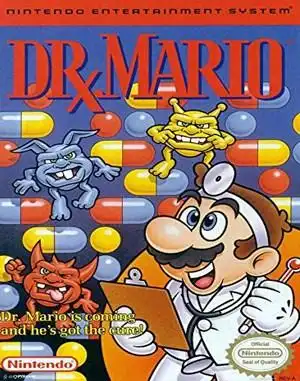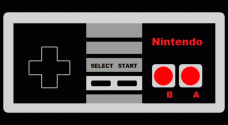Flip on that old console or fire up an emulator, and you might just hear it – that instantly recognizable, catchy tune that signals it's time to tackle some viruses. We're talking about Dr. Mario, Nintendo's iconic puzzle game that offered a different kind of challenge than simply clearing lines. It might have lived in the shadow of a certain other block-dropping giant, but for many of us, this medical puzzler holds a special place in our retro gaming hearts.
Released back in 1990 for both the NES and Game Boy, Dr. Mario wasn't just a quick cash-in; it became a legitimate hit, selling millions and spawning a legacy that continues even today. But what is it about this seemingly simple game that makes it so enduringly fun?
What Exactly is Dr. Mario?
At its core, Dr. Mario is a falling block puzzle game, much like its contemporaries. But instead of abstract shapes, you're dealing with colorful viruses (red, yellow, and blue) sitting at the bottom of a giant bottle. Your job, as the good doctor himself, is to toss in two-colored vitamin capsules.
The goal? Line up four objects of the same color – whether they're capsule halves or viruses – either vertically or horizontally. Doing so makes them disappear. Clear all the viruses in the bottle, and you move on to the next stage, facing a denser viral load and faster-falling capsules.
How Do You Play Dr. Mario?
The mechanics are straightforward, but the strategy runs deep.
- Dropping Capsules: Capsules fall from the top, controlled by you.
- Rotating & Positioning: You can rotate the capsule 180 degrees and move it left or right as it falls.
- Matching Colors: The key is matching colors. A capsule half counts, a virus counts. Four in a row (or column) of red, yellow, or blue clears them out.
- Chain Reactions: The real magic happens when clearing blocks causes others to fall and create new matches – triggering satisfying chain reactions!
- Difficulty: Levels get progressively harder with more viruses and faster falling speeds, demanding quicker thinking and precise placement.
It's easy to pick up in minutes, but mastering the later levels requires serious spatial reasoning and quick reflexes.
Why This Puzzle Prescription Still Works
Decades later, Dr. Mario remains a go-to retro favorite. Why does it still hold up?
- Addictive Gameplay: Like the best puzzle games, it hits that sweet spot of simple rules and complex outcomes. It's incredibly satisfying to clear a bottle, especially with a well-executed chain reaction. It's the kind of game you tell yourself you'll play for "just one more round."
- The Music: Let's be honest, the "Fever" and "Chill" themes are legendary. They are instantly recognizable and perfectly complement the game's mood, adding to the addictive loop.
- Pure Nostalgia: For many, playing Dr. Mario immediately transports them back to childhood afternoons spent glued to a CRT screen or a monochrome Game Boy. It's a comforting slice of simpler times.
- Solo & Competitive Fun: Whether you're challenging yourself to reach level 20 or battling a friend in versus mode, the game offers compelling experiences for both. Sending garbage blocks to your opponent in multiplayer is peak retro rivalry!
- A Unique Twist: While often compared to Tetris, Dr. Mario has its own distinct feel. The fixed viruses, the two-colored capsules, and the emphasis on clearing specific targets rather than just lines give it a unique identity.
Where Can You Play Dr. Mario Today?
Thankfully, you don't need to dust off your original NES or Game Boy (though that's the ultimate nostalgic experience!). Nintendo has made Dr. Mario available on various platforms over the years:
- Nintendo Switch Online: Subscribers can play the original NES version.
- Virtual Console: It appeared on Wii U and 3DS Virtual Console services (though these are less accessible now).
- Classic Compilations: It was included in releases like the Classic NES Series on Game Boy Advance.
- Emulation: As with many retro titles, emulation is a popular way to experience the original versions on modern devices.
- Sequels & Spin-offs: Numerous follow-ups like Dr. Mario 64, Dr. Luigi, and mobile titles offer updated takes on the formula.
The Enduring Legacy of the Good Doctor
Dr. Mario wasn't just a one-off success. Its popularity cemented it as a key part of the Mario universe, even if Mario is wearing a lab coat. The iconic viruses have appeared as enemies in other Mario RPGs, and the music is frequently remixed in games like Super Smash Bros.
It stands as a testament to Nintendo's ability to take a simple concept and turn it into a timeless, addictive experience. It's a game that requires thought, rewards quick decisions, and provides endless replayability.
Dr. Mario FAQ
Q: Is Dr. Mario like Tetris? A: Yes, it's a falling block puzzle game, but instead of clearing lines with abstract shapes, you match colored capsule halves and viruses to clear the screen. It has its own unique strategy and feel.
Q: What platforms was the original Dr. Mario released on? A: The original game came out for the Nintendo Entertainment System (NES) and the Game Boy in 1990.
Q: Can I play Dr. Mario on Nintendo Switch? A: Yes, the original NES version of Dr. Mario is available to play as part of the Nintendo Switch Online service for subscribers.
Q: Why is Dr. Mario considered a classic? A: It's celebrated for its simple yet addictive gameplay, iconic music, challenging difficulty curve, and strong nostalgic value for players who grew up with Nintendo's early consoles.
Whether you're revisiting it for the hundredth time or discovering it for the first time through a modern platform, Dr. Mario is a puzzle game prescription that still delivers a healthy dose of fun.


